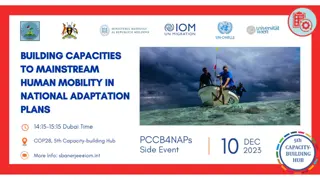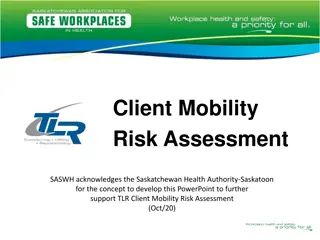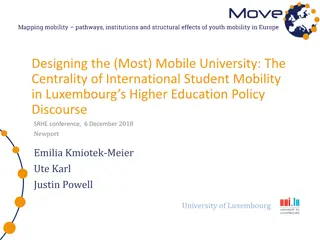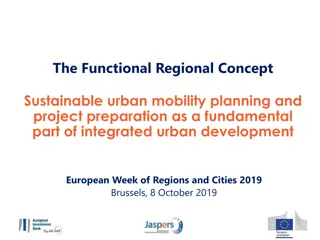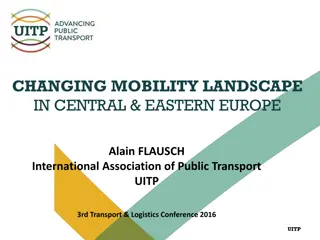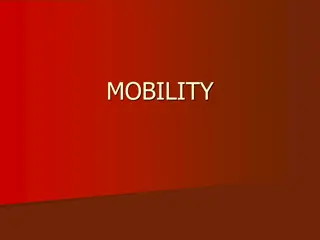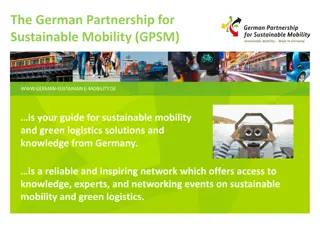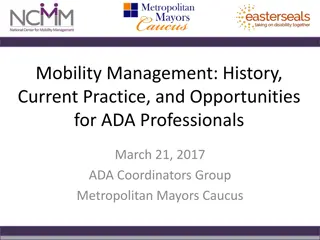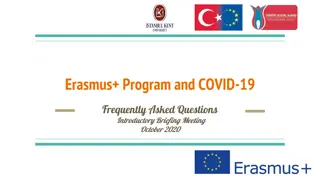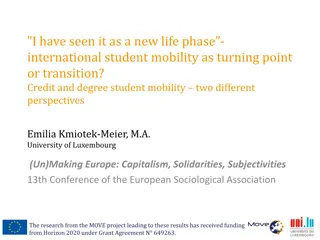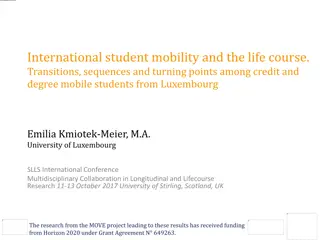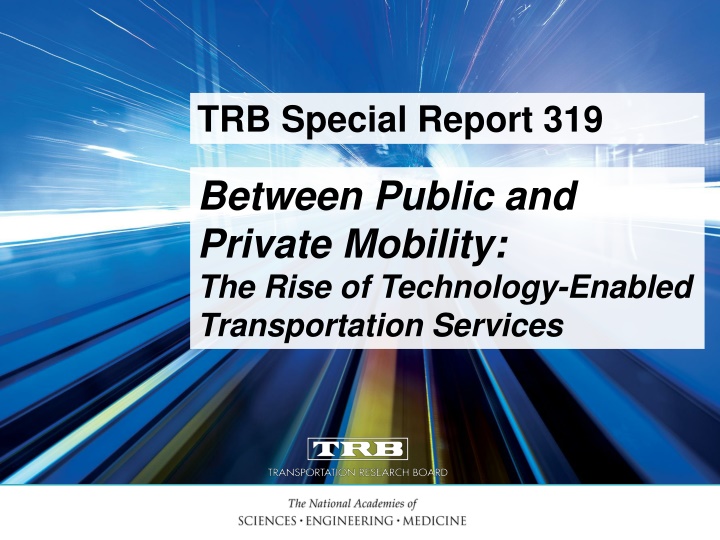
Rise of Technology-Enabled Transportation Services: TRB Special Report 319
Explore the growth of technology-enabled mobility services, their impact on consumers and existing transportation, policy implications, regulatory challenges, and areas for research based on TRB Special Report 319. Committee overview and members provide insights into the formation and work process behind the report.
Download Presentation

Please find below an Image/Link to download the presentation.
The content on the website is provided AS IS for your information and personal use only. It may not be sold, licensed, or shared on other websites without obtaining consent from the author. If you encounter any issues during the download, it is possible that the publisher has removed the file from their server.
You are allowed to download the files provided on this website for personal or commercial use, subject to the condition that they are used lawfully. All files are the property of their respective owners.
The content on the website is provided AS IS for your information and personal use only. It may not be sold, licensed, or shared on other websites without obtaining consent from the author.
E N D
Presentation Transcript
TRB Special Report 319 Between Public and Private Mobility: The Rise of Technology-Enabled Transportation Services
Genesis of Report Rapid rise of smartphone-based innovative mobility services New apps and services being introduced on a seemingly accelerating basis Regular reports of jaw-dropping increases in market valuation of Lyft and, especially, Uber Potentially big changes for auto-mobility All of these rapidly expanding services are raising vexing questions for regulators Across industries and jurisdictions Equity questions
Statementof Task Examine the growth and diversification of technology- enabled mobility services Explore the implications these services have for consumers and existing transportation services Identify policy, regulatory, and other issues and opportunities to plan for and regulate these services Including the existing regulatory structure for taxi, limousine, and transit services Identify priority areas of research to inform public policy decisions This study was self-initiated and was funded entirely by TRB.
More than taxis and TNCs Tech-enabled mobility options purchased trip by trip Shared mobility mostly sequentially, sometimes concurrent sharing Carshare Bikeshare Microtransit E-hail apps Largely private sector initiated Most attention to taxis and TNCs because of the current policy debates
Committee Overview Committee formed, vetted, and began work in June 2014 Committee members have expertise in: Urban planning and transportation policy Transit and shared use services Regulatory and economic analysis Transportation operations and technologies Taxi operations and regulations Most (9 of 12) members university researchers Held 4 two-day meetings in 2014 and 2015 to gather information and draft the report
Committee Members Brian Taylor, UCLA (chair) Ryan Chin, MIT Melanie Crotty, San Francisco Bay Area MTC Jennifer Dill, Portland State University Lester Hoel, University of Virginia Michael Manville, Cornell University Steve Polzin, University of South Florida Bruce Schaller, Consultant Susan Shaheen, UC Berkeley Daniel Sperling, UC Davis Marzia Zafar, California Public Utilities Commission Susan Zielinski, University of Michigan
Information Gathering Committee members heard from: Representatives of the taxi industry Uber and Lyft Carsharing operators Insurance providers and regulators City council members Developers of other innovative services Transit representatives USDOT researchers
Where is this all headed? Two views: 1. This is the tip of the iceberg Real-time decision-making about trips, options, time, and costs at the margin is revolutionizing travel Consumers will increasingly buy trips and not vehicles The sky is the limit Big changes, but for a niche market The changes are significant, but mostly at the margin Issues are confined mostly to existing taxi/paratransit markets, and their variants 2. More from Michael Manville and Susan Shaheen on this later
Taxi/Limo Regulations Regulations local, county, and state Significant variations in regulation between state and local agencies Street hail and taxi stand markets need more extensive regulations Scale of taxi companies is very small compared to size of largest TNCs More from Bruce Schaller on this later
Security and Public Safety New services provide more information for both passengers and drivers This can increase safety for both drivers and passengers The effectiveness of various approaches to driver vetting has been curiously understudied Determining the most cost-effective approaches to driver vetting requires more study Consistency across services is desirable
Labor Issues Number of drivers is growing rapidly Growth in part-time drivers in new services Income and benefits can vary greatly Limited employment security and benefits is common across the industries Independent contractors vs. employees These labor issues transcend shared mobility services
Equity and Access Four Dimensions of Equity in Public Policy Debates over Technology-Enabled Mobility Services Equity Dimension Issues Raised Firms, markets, and competition Regulations, subsidies, and social services Geographies and jurisdictions Stakeholder groups Market dominance, unfair competition, regulatory capture Regulatory consistency, public subsidy of winners and losers, social service transportation obligations Service in high- versus low-demand areas; service in poor, minority neighborhoods People without smartphones, unbanked populations, workers, etc. More on this from Susan Shaheen later
Insurance Taxis typically have full-time commercial coverage TNC coverage generally varies by stage of the ride Carsharing insurance varies by jurisdiction and company Insurance products available tend to lag the evolution of mobility services but starting to catch up
Committee member presentations Michael Manville Economics of new, shared mobility services Bruce Schaller Implications for taxis (& everyone else) Susan Shaheen Consequences for travel behavior
Committee Recommendations
Recommendation 1 Public policies and regulations should be designed to steer the development of innovative services to improve mobility, safety, and sustainability
Recommendation 1a Reassessment of regulations for all for-hire vehicle services is likely needed market entry geographic coverage span of service
Recommendation 1b Public safety requirements should be consistent across each type of service (street hail/taxi stand, dispatch) and be gauged to risks
Recommendation 1c Policy makers and regulators should consider whether TNC and taxi services may be better regulated at the state, regional, or local level, while ensuring consistency and effective enforcement
Recommendation 1d Systematic evaluations of safety requirements are needed
Recommendation 1e Accessibility of services to all travelers should be a priority
Recommendation 2 Basic service information for effective planning and regulation should be required of all mobility services
Recommendation 3 Employment classifications need to be carefully assessed
Recommendation 4 TNCs and other innovative services should be integrated with existing transportation systems and planning
For additional information Katherine Kortum Study Director kkortum@nas.edu 202-334-3123 Brian D. Taylor Committee Chair btaylor@g.ucla.edu Transportation Research Board 500 5th Street NW Washington, DC 20001 www.trb.org



